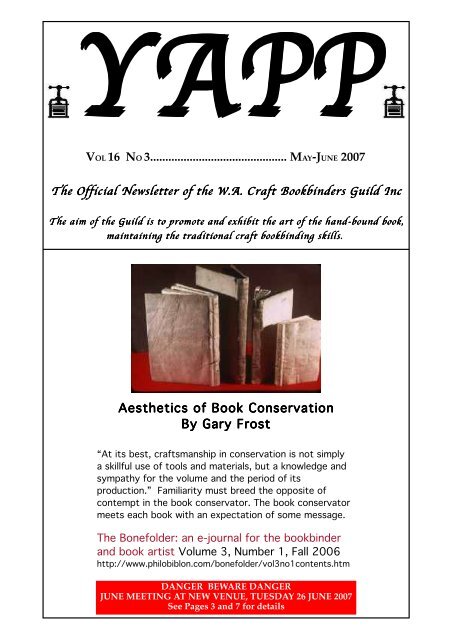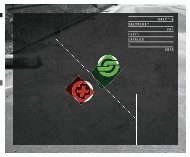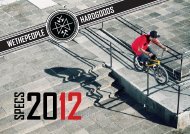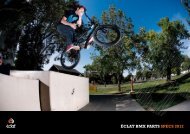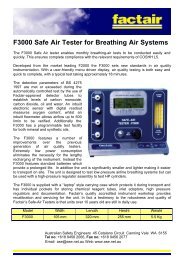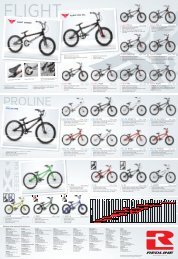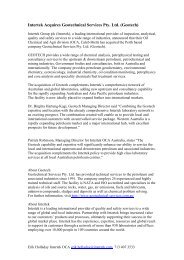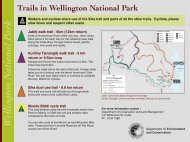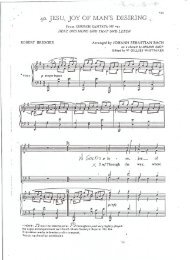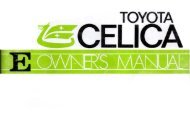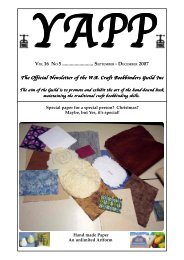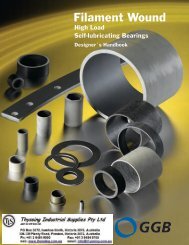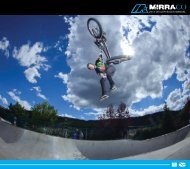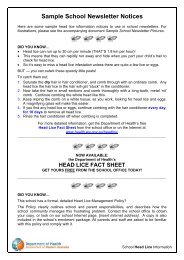View - iiNet
View - iiNet
View - iiNet
You also want an ePaper? Increase the reach of your titles
YUMPU automatically turns print PDFs into web optimized ePapers that Google loves.
YAPP<br />
VOL 16 NO 3............................................. MAY-JUNE 2007<br />
The Official Newsletter of the W .A . Craft Bookbinders Guild Inc<br />
The aim of the Guild is to promote and exhibit the art of the hand-bound book ,<br />
maintaining the traditional craft bookbinding skills .<br />
Aesthetics of Book Conservation<br />
By Gary Frost<br />
“At its best, craftsmanship in conservation is not simply<br />
a skillful use of tools and materials, but a knowledge and<br />
sympathy for the volume and the period of its<br />
production.” Familiarity must breed the opposite of<br />
contempt in the book conservator. The book conservator<br />
meets each book with an expectation of some message.<br />
The Bonefolder: an e-journal for the bookbinder<br />
and book artist Volume 3, Number 1, Fall 2006<br />
http://www.philobiblon.com/bonefolder/vol3no1contents.htm<br />
DANGER BEWARE DANGER<br />
JUNE MEETING AT NEW VENUE, TUESDAY 26 JUNE 2007<br />
See Pages 3 and 7 for details
Minutes of the WA Craft<br />
Bookbinders’ meeting held on<br />
Monday 30th April 2007<br />
The Meeting was opened at<br />
7.05 pm. with an attendance 19<br />
members and two visitors.<br />
Apologies. Gavin Rankine;<br />
Claudia Kurowski; Shirley<br />
Withers.<br />
The minutes for February and<br />
March were printed in “Yapp”<br />
and taken as read.<br />
Sub-editor of YAPP, Mervyn<br />
Bond, was thanked for a well<br />
produced “Yapp” and Shirley<br />
Withers thanked for doing the<br />
March minutes at very short<br />
notice.<br />
The Treasurer reported little<br />
change from the March<br />
meeting.<br />
General business.<br />
Designer Binders Announce<br />
their competition for 2009 on<br />
the theme of water, with very<br />
big prizes to be won.<br />
George Ross spoke of his<br />
advanced bookbinding course<br />
from May 1st which will<br />
concentrate on sewing and<br />
finishing with three books to be<br />
produced.<br />
Peter Foss was asked to explain<br />
“geocaching”, a word not<br />
known by any member present.<br />
A game involving hiding<br />
something and leaving complex<br />
clues on the internet for others<br />
to interpret and find the object.<br />
David Millhouse showed a<br />
sample print of selected letters<br />
from various type faces to<br />
show the progress made in<br />
sorting the Guild’s collection.<br />
Agenda for May is tentatively<br />
Paper conservator Sylvia Bass,<br />
who is overseas till the 1st.<br />
week in May. To be<br />
confirmed.<br />
George Ross, as guest speaker,<br />
demonstrated the techniques of<br />
floating off end papers from<br />
cover boards and lifting book<br />
labels etc.<br />
Minutes of the WA Craft<br />
Bookbinders’ meeting held on<br />
Monday 28th May 2007.<br />
The meeting opened at 7.00 pm<br />
with an attendance of 21.<br />
Apologies were received from<br />
Shirley Withers, Geoff & Joan<br />
Dimock, Judith Montgomerie<br />
and Kay Fisher. Expressions of<br />
regret were made for Joan and<br />
Kay who were seriously<br />
unwell.<br />
A quorum of Officers was not<br />
filled, so no resolutions were<br />
passed, but the Treasurer was<br />
strongly in favour of the July<br />
meeting to be the end of our<br />
fiscal year and the AGM to be<br />
held in September, allowing<br />
time for a full audit of the<br />
books. Officers present agreed.<br />
The President spoke briefly on<br />
our pending removal of<br />
premises and where we expect<br />
to go. Most members were<br />
quite concerned about this<br />
matter. David, Frances, Bob<br />
and Gavin had already<br />
inspected the hall with Jan<br />
Stroud and everything was<br />
fully explained.<br />
2<br />
The existing premises are to be<br />
vacated on Wednesday 30th<br />
May and David Millhouse, Bob<br />
Crowe, Gavin Rankine, Neville<br />
Duckett and Peter Foss will<br />
remove all of our belongings to<br />
Gavin’s premises for storage.<br />
The Secretary expressed<br />
concern that of 54 persons<br />
contacted, only 21 turned up at<br />
this vital meeting.<br />
The Secretary also stated that<br />
Cockerells Marbled Paper (the<br />
famous English Bookbinders)<br />
seemed to be out of contact.<br />
With the expansion of more<br />
skilled binders, a higher quality<br />
of PVA glue is to be stocked,<br />
but it is twice the present price.<br />
Normal PVA will still be<br />
available.<br />
Doug Firth gave a lengthy talk<br />
(with his usual enthusiasm) on<br />
paper as a material and<br />
techniques to preserve and<br />
repair it. He spoke about<br />
Reemay (random spunbonded<br />
Polyester cloth), Mylar,<br />
washing, rinsing, wet Bibles,<br />
flood and fire damage. He<br />
showed a book; ‘Papermaking’<br />
by Dard Hunter as an excellent<br />
reference. He mentioned the<br />
use of atomizers to keep paper<br />
damp, metal fragments causing<br />
‘foxing’, freezing a wet book<br />
until sufficient time is available<br />
to properly repair it and many<br />
other items of great need and<br />
interest in this endeavour.<br />
The course that George Ross<br />
was running on advanced<br />
finishing was extremely<br />
valuable and a further course<br />
would be run on July 17th,<br />
24th, 31st & August 7th at his<br />
Bullsbrook Bindery.<br />
The meeting closed at 10.30pm<br />
with an attendance of 15.
MONTHLY MEETING<br />
JUNE TUESDAY 26, 2007<br />
7.00 pm<br />
Alexander Park Craft House<br />
Clyde Road<br />
Menora<br />
SEE PAGE 7<br />
AGM<br />
Explore the venue<br />
Show and Tell<br />
MONTHLY MEETING<br />
JULY TUESDAY 31, 2007<br />
7.00 pm<br />
Alexander Park Craft House<br />
Clyde Road<br />
Menora<br />
Speaker/Activity<br />
to be advised<br />
Show and Tell<br />
.<br />
FROM<br />
THE<br />
PEN OF THE<br />
PRESIDENT<br />
The news from the Red Cross Library that they<br />
would have to move due to Hollywood Hospital<br />
redevelopment came as quite a shock. The<br />
unexpected move has happened twice before in my<br />
time with the Guild. But this time there is no<br />
room for us to go on with the Red Cross.<br />
The following week was a long one. Even so it was<br />
just a week later that, following a tip from Mervyn<br />
Bond, Frances and I were looking at an alternative<br />
venue; Alexander Park Craft House, Clyde Rd.<br />
Menora. The following day Bob Crowe and Gavin<br />
Rankine also went to assess the venue. We all<br />
agreed the venue had what we need to make a new<br />
home.<br />
At the last meeting in the Red Cross Library, 28th.<br />
May, the probability that we may have to meet on<br />
a different evening to our usual last Monday of<br />
each month was discussed with lively interest.<br />
The last Tuesday of each Month was<br />
overwhelmingly popular, mainly because the<br />
alternative, Friday, was much too busy with traffic<br />
for most members coming from distance.<br />
My Thanks to Gavin Rankine. Bob Crowe, Neville<br />
Duckett, and Peter Foss who volunteered help to<br />
move out of the Red Cross rooms on Wednesday<br />
30th. Additional thanks to Gavin Rankine who<br />
also provided the space to store our materials and<br />
equipment until we can move to a new home.<br />
The application for membership of the Alexander<br />
Park Craft House has been made. We will not<br />
know the outcome until later in June , but all<br />
members will be notified before the June meeting<br />
is due.<br />
Happy Binding<br />
David Millhouse.<br />
3
FLOATING OFF ENDPAPERS<br />
A demonstration by George Ross<br />
Materials required<br />
• Tray to hold water with a length and breadth<br />
sufficient to fit in the boards being processed. A<br />
Kitty Litter tray accommodates A4 pages.<br />
Sometimes the glue softens at different rates so<br />
an area might stick. Carefully lay the lifted area<br />
of the endpaper back down and return to the<br />
moistening procedure.<br />
When the endpaper is remove put it in the tray of<br />
water face down and check the back for glue.<br />
Gently rinse/lift off the glue.<br />
Lay the rinsed endpaper face up on the laminex<br />
surface making sure there are no wrinkles. Cover<br />
with a clean dry piece of blotting paper and lay<br />
the glass over the blotting paper.<br />
Boards soaking in water in tray<br />
• Blotting paper - lots.<br />
• Plate glass about 260 mm x 350 mm or a<br />
plain tempered glass kitchen cutting 'board' of<br />
about the same size (available from kitchen area<br />
of supermarkets for about $5)..<br />
• Smooth clean laminex table top or a board<br />
covered with laminex or such and about the same<br />
size as the plate glass.<br />
• Spatula or bone folder.<br />
• Boards from a book.<br />
Procedure<br />
If the board is to be used again later then lay the<br />
board on the laminex surface with the endpaper<br />
face up. Dampen a clean cloth or dip a sheet of<br />
blotting paper in the tray of water and lay over<br />
the endpaper.<br />
The time required to sufficiently moisten the<br />
endpaper to allow it to be lifted off will vary from<br />
twenty minutes to several hours. During this<br />
time maintain the dampness of the cloth or<br />
blotting paper.<br />
Wrinkled blotting paper<br />
When the blotting shows signs of wrinkling<br />
remove the glass, gently remove the blotting<br />
paper, cover the endpaper with a fresh sheet of<br />
blotting paper, replace the glass. Repeat this<br />
process, perhaps four times, until no wrinkles<br />
appear. The endpaper could now be used or kept<br />
flat under light pressure until required.<br />
If the board is not going to be used again then<br />
soak the board in the tray of water. How long the<br />
board should soak will vary as for the first<br />
method. A two hour minimum is very likely and<br />
overnight is possible.<br />
When the endpaper can be lifted proceed as before<br />
rinsing off glue and applying the blotting paper<br />
procedure until dry.<br />
A book plate removed using the<br />
blotter/cloth method<br />
Separating the<br />
endpaper from a<br />
soaked board<br />
Do not hurry the process. Test with the spatula/<br />
bone folder at a corner by gently inserting the<br />
blade or tapered end under the endpaper. If it<br />
lifts readily then attempt to lift the rest of sheet.<br />
4<br />
Report by Mervyn Bond
DOUG FIRTH'S BIBLIO FOLIO REVISITED<br />
by Peter Foss<br />
Biblio Folio<br />
It was like being part of a secret conclave as we all<br />
headed to Doug Firth's BiblioFolio in Fremantle.<br />
By the time I got to High Street, Fremantle, there<br />
was a flood of members heading towards number<br />
15; some emerging from the Villa Roma next door.<br />
Inside, Doug's premises were a wonderland of<br />
accumulated antique bookbinding machinery all<br />
perfect for craft<br />
Ludlow<br />
bookbinding. Doug took us<br />
typecaster<br />
through each one explaining<br />
its use and history and<br />
showing how well each huge<br />
cast iron item performed its<br />
function. We also learned of<br />
the small miracle that had<br />
stopped one over-massive<br />
item crashing through the<br />
floor when it was upstairs.<br />
Among the machines he had<br />
were: 188O’s Furnival<br />
flywheel guillotine, 1912<br />
Krause boardcutter, 1930’s<br />
standing press, two 1860’s<br />
nipping presses and a<br />
McKay No3 blocking press.<br />
admired and who had lectured him - Allan<br />
Stratton. He was painstakingly restoring a book of<br />
Stratton's -The History of Bookbinding. Only a<br />
few were made and they were printed on<br />
newsprint. One of the big problems was getting<br />
the types.<br />
Doug showed us a beautiful paper he was using<br />
called Bird and Pomegranate.<br />
Arab printing press<br />
Then it was time for a<br />
practical demonstration.<br />
Doug has thought his<br />
methodology through and<br />
has some very useful<br />
systems.<br />
He demonstrated repair<br />
with a very dilapidated 17th<br />
Century book he was<br />
repairing. It was a book<br />
from the times when you’d<br />
buy your book as sheets<br />
from a bookseller and take it<br />
to your bookbinder to be<br />
bound.<br />
With any repair he always<br />
first brushes out the spine.<br />
Then he checks the<br />
Press with height<br />
adjustable patten<br />
He has since obtained some more really precious<br />
items: An 1870’s ARAB printing press and a<br />
Ludlow typecaster with 47 fonts. The ARAB is<br />
being restored currently.<br />
He demonstrated his blocking press and told us of<br />
a NSW bookbinding lecturer whom he greatly<br />
pagination and if necessary repaginates. Then he<br />
washes and de-acidifies the paper to be repaired.<br />
Only then does he start the repair. This he does on<br />
Mylar on a light-table. He places Mylar above and<br />
below the page.<br />
Cont page 6<br />
5
Cont from page 5<br />
You can buy Mylar at Historical Society, Zetta<br />
Florence or Inertech. He lays the repair tissue<br />
paper over the Mylar on top of the paper to be<br />
repaired and water cuts it to size. To hold the<br />
water he uses a beaker inside a bowl. With the<br />
paper he was using he would probably only do the<br />
outside of each section and the map. He has even<br />
finer paper if it needs more repair. He only pastes<br />
the toothed side of the paper. For his paste he<br />
uses methyl cellulose. It shouldn't go mouldy - if it<br />
does go mouldy you know your container or your<br />
brush is not sterile. When the paste is dry he<br />
sprays the paper with de-acidified water. Then he<br />
dries it in a sandwich of rag mat-covered<br />
corrugated cardboard; with Re-May for release<br />
paper then blotting paper. During the process,<br />
depending on the needs of the occasion he has the<br />
light table on or off. For fine handling he uses<br />
dental tools and both toothed and untoothed<br />
tweezers to handle strips. If there is text on the<br />
area to be repaired, you tack the other side first.<br />
He can get several uses out of his blotting paper<br />
and when eventually he has to retire it he uses<br />
the old blotter to remove glue on spines.<br />
After more demonstrations we all adjourned for<br />
coffee in the small kitchen at the back and were<br />
entertained by the sound of crashing crockery<br />
from the kitchen next door. Apparently the newly<br />
opened restaurant was having staff problems.<br />
The use of japanese repair tissue was recently demonstrated at one of<br />
our meetings by David Millhouse. The article below, by David, picks up<br />
the key elements of that demonstration<br />
Conservation, this site worth a visit.<br />
http://idp.bl.uk/archives/news29/idpnews_29.a4d<br />
6
THE GEORGE ROSS FIVE DAY WORKSHOP<br />
MAY 2007<br />
GETTING STUCK UP WITH A BETTER QUALITY PVA<br />
Over the past five Tuesdays Peter Foss<br />
and I have enjoyed the privilege of being<br />
taught by George Ross. This is a unique<br />
experience which I encourage as many<br />
members to take part in as can manage.<br />
George begins with basics and takes one<br />
right through all stages of the binding<br />
process. It matters not from what level<br />
one begins.<br />
A major outcome that will affect the<br />
whole guild is the experience of using a<br />
much more suitable PVA glue. In the past<br />
the PVA has dried hard and stiff with<br />
little ability to hold clay impregnated<br />
paper.<br />
I have suggested that the Guild purchase<br />
a quantity of the glue we used at the<br />
workshop. The workshop glue dries with<br />
much more flexibility which enables the<br />
rounding and backing process to be done<br />
with ease.<br />
While being more expensive it may not be<br />
needed for every job. But for that fine job<br />
that needs extra care I would encourage<br />
the best.<br />
David Millhouse<br />
June 3 2007<br />
‡ ‡ ‡ ‡ ‡<br />
‡ ‡ ‡ ‡ ‡ ‡ ‡<br />
DRIVEWAY<br />
HOW TO GET TO OUR NEW VENUE<br />
JUNE MEETING 2007<br />
CRAFT<br />
HOUSE<br />
7
Coming Events<br />
Tuesday 26 June 2007 - the Monthly Guild meeting<br />
AGM<br />
Tuesday 31 July 2007 - the Monthly Guild meeting<br />
George Ross’s July bookbinding courses<br />
6 people or less - will run from 9 am until you drop<br />
Tuesdays July 17, 24, 31 & August 7<br />
Friday 24 August to Sunday 26 August: Craft & Antique & Collector's Fair<br />
Claremont Showgrounds Exhibition Centre<br />
9.30 am to 4.30 pm daily<br />
Perth Royal Show<br />
29 September - 6 October 2007<br />
WA CRAFT<br />
BOOKBINDERS<br />
GUILD INC<br />
Executive<br />
President: David Millhouse 08 9295 2491<br />
V/President Bob Crowe 08 9328 3110<br />
Secretary Gavin Rankine 08 9459 0295<br />
& c/- 44 Austin Avenue<br />
Course convener KENWICK WA 6107<br />
rankinegg@optusnet.com.au<br />
Treasurer Neville Duckett 08 9448 9925<br />
Editor Graham Levey 08 9228 2725<br />
YAPP<br />
Editor Graham Levey 08 9228 2725<br />
Sub-editor Mervyn Bond 08 9330 3310<br />
Contributions:<br />
By Post:<br />
By email:<br />
The Editor<br />
c/- 232 Charles Street<br />
NORTH PERTH WA 6006<br />


